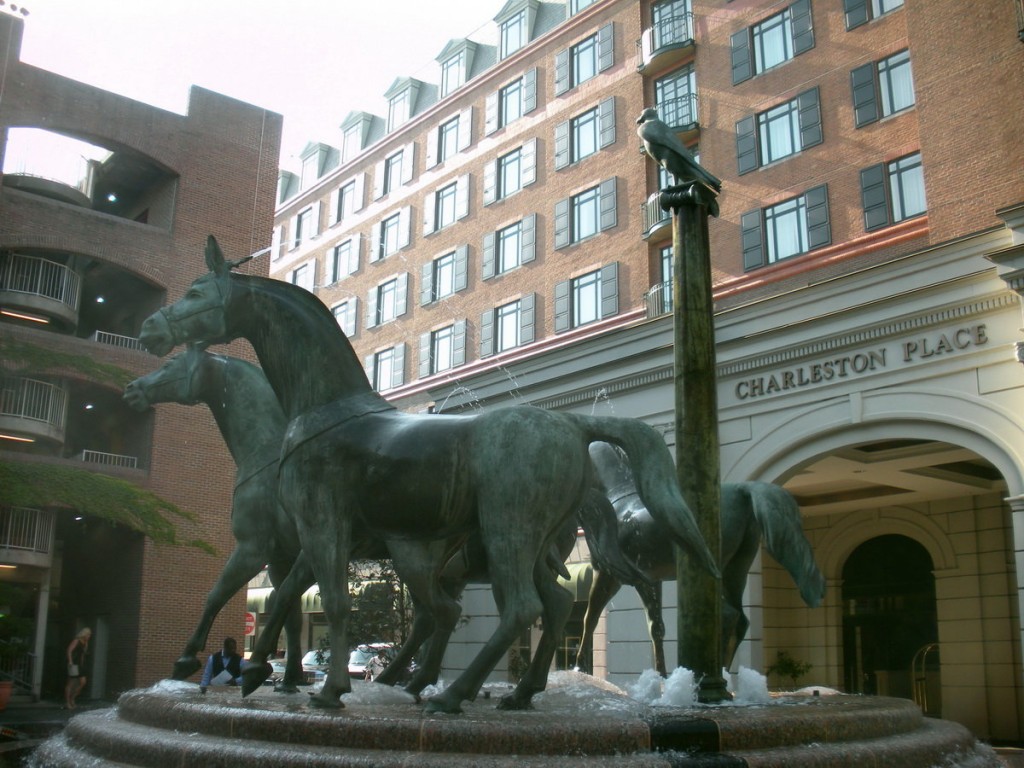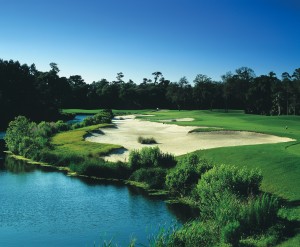My buddy, Mark Eucalitto, and I rolled wearily into Charleston, S.C. about 10 p.m. on a Saturday night.
We had endured a beast of a drive down from Connecticut. Normally a 13-hour ride had turned into 22 hours in the car thanks to a combination of traffic jams, accidents, road work and finally as we neared the South Carolina border, tornadoes. Yep, a tornado shut down I-95 for two hours turning the interstate into a parking lot. At least we had time to get to wander about our cars and get to know the other people that were driving south.
Well, it felt awfully sweet pulling into The Charleston Place hotel that evening and what a place to pull into. First class all the way; valets, doormen, polished marble floors, the whole nine yards. But more about this super hotel later on.
Once in Charleston, the trip immediately took a decided turn for the better and the brutal drive slowly receded in our minds. One of our goals on this mission to the Old South was a trip to Kiawah Island Golf Resort just south of the city to check out its cache of first rate courses.
This story is not about the fabled Ocean Course, which pretty much everyone knows is one of the best layouts in the world and site of such notable events as the Ryder Cup and the Senior PGA Championship. I’m going to tell you that Kiawah is more than the Ocean Course, good as it is. There are four other tracks at the resort that, while not carrying the luminescence of the Ocean Course, provide truly fabulous Low Country golf experiences.
The two courses that Mark and I sampled were Cougar Point and Osprey Point, while the resort also offers Turtle Point and Oak Point golf courses.
Cougar Point Golf Course, recently rated the “Golf Course of The Year” by the South Carolina Golf Course Owners Association, is one nice loop, offering dramatic vistas as the middle of Cougar Point’s front nine plays along the Kiawah River.
Originally named Marsh Point, Cougar Point was redesigned by Gary Player in 1996 and plays 6,875 yards. It features a nice blend of short and long par-fours, risk/reward par-fives and challenging par-3s.
Cougar Point’s longer par-fours provide plenty of room off the tee with generous fairways so that driver is never out of the equation. Open run-up areas in front of the greens make them reachable for the shorter hitters using a wood or long-iron.
The track’s short par-four makes players find specific landing areas with their drives to avoid obstacles and provide the best angle to the greens. For example, on number five, a 410-yard par-four, you want to be to the right to avoid hitting over and around trees. On the 354-yard seventh and 361-yard eighth, you have to be to the left off the tee to avoid trees guarding approach shots.
Number six, a 180-yard par-three, has a spectacular view, and number 17, a 363-yard par-four, is considered by many to be one of the prettiest and most challenging golf holes on the island. Our favorite holes were the 535-yard par-five third, which has a trap protecting the right side of the landing area off the tee and a pond on the left that runs from the second shot approach landing area all the way to the green. And number 12, which is one heck of a par-three, playing 223 yards from the tips with the green sitting on sort of a peninsula.
Something you have to quickly get used to at Cougar Point is the bicyclists that travel the many miles of trails on the island resort, some of which pass along or through the course. It’s a bit annoying sharing the course with our two-wheeled friends who, at times, seemed to forget there were people playing golf all around them.
While we enjoyed Cougar Point, we really got hopped up about Osprey Pont, one of the best courses I’ve played in the Charleston area, which is full of good golf courses. The track was very playable for recreational players, while still presenting enough challenge to keep you on your toes the entire round. Each of the holes is a separate entity and this imbues Osprey Point with a sense of serenity and peace that is sometimes hard to find at resort courses.
Architect Tom Fazio originally developed Osprey Point as a members’ only type course but since the layout is now part of Kiawah Island Golf Resort, anyone can enjoy this gem. Fazio did a masterful job using the natural beauty of the area to create Osprey Point, which features four large, natural lakes, fingers of saltwater marsh, and dense maritime forests of live oaks, pines, palmettos and magnolias. The course thus offers a wide variety of holes, each presenting its own unique challenges and beauty. The par-fours here are all interesting and rage in length from 340 yards to 461 yards from the championship tees.
Osprey Point features generous landing areas and few forced carries. From the proper tees, the course poses appropriate challenges to the better golfers and fairness to the high-handicapper, senior golfers and junior golfers.
For the better player, the course is challenging, with plenty of hazards to avoid, numerous risk/reward options and doglegs that go both left to right and right to left, requiring a premium on both accuracy and finesse.
After getting hooked up by friendly pro shop attendant Bob Owea (is everybody in South Carolina happy?), Mark and my son-in-law, Brandon Burke, headed out for one of the most pleasing rounds I have ever experienced. We tackled Osprey Point from what would be the member’s tees, around 6,202 yards, which is wise the first time on such a course, although one step up brings you to only 6,502 yards.
One of the nicest holes the course hits you right away, the 175-yard (back markers) par-three third. The tee shot is all carry across a wetland to a green that is slightly hidden from view. Number seven is a short par-four, playing only 340 yards from the tips, and two holes later, the 461-yard par-four ninth smacks you in the face like a hard breeze off the nearby Atlantic Ocean.
The 11th is another solid par-three, playing 205 yards from the tips with the tee shot having to carry a pond that runs up to the putting surface. Number 15 is a 170-yard par-three that is surrounded by sand, and 18 is a good finisher, playing 552 yards from the back markers with the hole bending to the left with water on that side all the way to the green.
Fees for both courses are modest, especially for the quality of the layouts.

After golf, we headed back to The Charleston Place, arguably the finest hotel in the Low Country, for some R and R. Located at the heart of downtown Charleston, in the historic district and within walking distance of all the major attractions, the hotel has a true feel of the Old South and its central location makes strolling the famous Marketplace, historic sites and renowned restaurants of downtown Charleston as easy as making a six-inch putt, maybe easier.
But you might not want to stray very far from The Charleston Place, for it offers a top-rated spa, and a funky bar called the Thoroughbred Club that is outfitted with plush leather seats and bedecked with wonderful paintings of race horses. The Palmetto Cafe offers a variety of American and international dishes in an informal atmosphere.
The Club is a private concierge level located on the top two floors. You can relax by the rooftop pool, work out in a health club, dine in the award-winning Charleston Grill and browse boutiques both at the hotel proper and in the shopping areas nearby.
The spiral staircase located in the central lobby of the hotel is a sight to see with huge sprays of fresh flowers framing the entire area. Our rooms were comfortable and quiet, perfect for working on the laptop and getting a good night’s sleep after a hectic day golfing and sightseeing.
The hotel, which has 320 rooms total, 80 at The Club level and 40 suites, offers 24-hour room service, a business center., concierge service, valet parking and ramp parking for 440 cars (this is real bonus in a city where parking is as hard to come by as a New York Yankee baseball cap), and all rooms are equipped with data ports and voicemail.
Room rates at The Charleston Place aren’t cheap but we are talking about a world-class hotel that earns its money.
Charleston offers horse-drawn carriage rides, mansions and museums, and nearby, historic monuments such as Fort Sumter, where the first shots of the Civil War were fired. A few miles from the city are a number of magnificent old plantation houses, such as the eighteenth century Middleton Place.
Autumn is an especially appropriate time to visit Charleston, as the hot temperatures of summer have moderated.
So remember, Kiawah is more than just the Ocean Course. And, for a perfect base of operations, you have to check out The Charleston Place. You won’t be disappointed in either choice.
For further information about Kiawah, visit www. kiawahresort.com. For further information about The Charleston Place, visit www.charlestonplace.com.

